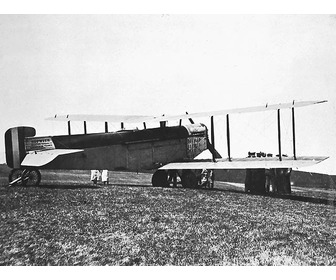Sopwith Atlantic

The Sopwith Atlantic was an experimental British long-range aircraft of 1919. It was a single-engined biplane that was designed and built to be the first aeroplane to cross the Atlantic Ocean non-stop. It took off on an attempt to cross the Atlantic from Newfoundland on 18 May 1919 but ditched during the attempt owing to an overheating engine.
Boat, Blackburn Type I, Sopwith Atlantic, White and Thompson No.1
Made by Sopwith Aviation Company.
It is the successor of the Sopwith B.1 ,
Sopwith Atlantic is the predecessor of the Sopwith Wallaby.
Jet Or Prop
prop
Designer
George Carter (engineer)
Predecessor
Sopwith B.1
Propeller Diameter Alt
2.90 m
Length Alt
9.76 m
Power Alt
280.0
Loaded Weight Main
6150.0
Height Alt
3.35 m
Type Of Prop
water-cooled V12 engine
Successor
Sopwith Wallaby
Max Speed Main
118 mph
Developed From
Sopwith B.1
Propeller Diameter Main
289.56
Height Main
335.28000000000003
Cruise Speed Main
105 mph
Ceiling Main
13000.0
Number Built
1
Crew
2
Span Main
1417.32
Cruise Speed Alt
91
Area Main
575.0
Span Alt
14.18 m
Plane Or Copter?
Number Of Propellers Per Engine
1
Engine(prop)
Rolls-Royce Eagle VIII
Propeller Or Rotor
prop
Manufacturer
First Flight
1919
Origin
United Kingdom
National Origin
United Kingdom
Loaded Weight Alt
2795.0
Power Main
375 hp
Propellers
2
Number Of Props
1
Empty Weight Alt
1364.0
Variants With Their Own Articles
Sopwith Wallaby
Length Main
975.36
Area Alt
53.4 m²
Similar Aircraft
*Short Shirl*Boulton Paul Atlantic*Vickers Vimy
Max Speed Alt
103
Related
*Sopwith B.1*Sopwith Wallaby
Empty Weight Main
3000.0
Ceiling Alt
3
900 m
Category
